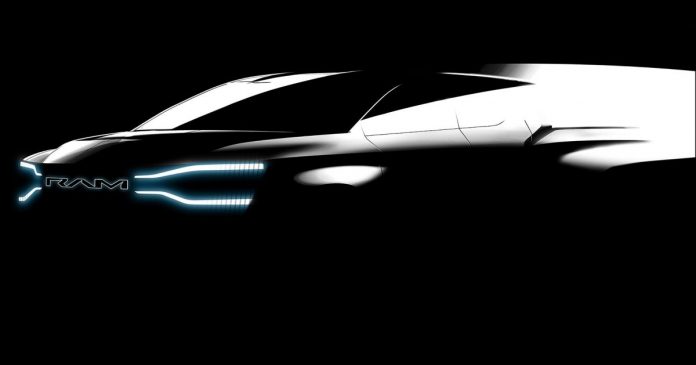The name ‘Stellantis’ evokes astronomical connotations, and this is perhaps appropriate for a company that was formed from the merger of two already large conglomerates, and now has ambitions to lead the global automotive industry.
Created last year from a merger between FCA (Fiat Chrysler Automobiles) and Groupe PSA, Stellantis is now one of the most brand-heavy companies in the automotive space.
Currently, the company includes 14 distinct brands selling vehicles under their own names. Together, these brands cover the entire gamut of automotive segments, from city cars like the Lancia Ypsilon to the giant Ram 3500 heavy-duty pickup truck.
Stellantis has inherited numerous platforms from its predecessor companies, and with this bevy of platforms comes unique tooling, separate active safety, driver assist and infotainment systems, and a raft of powertrains and drivetrains.
These issues all create substantial inefficiencies and additional costs at the mass-production level, and these issues are further complicated by Stellantis’ commitment to sell electric vehicles in substantial quantities, with the company recently confirming that it expects to sell a total of five million battery-electric vehicles, across its 14 brands, by 2030.
Compared to the typical internal-combustion car, however, an EV requires fewer parts to manufacture.
With the company deciding to gradually phase out production of its combustion-powered models, this also provides Stellantis with an opportunity to heavily consolidate the development and production of its future EV models around a set of uniform architectures, regardless of which brand they will be sold under.
Correspondingly, Stellantis has announced that all future EVs will utilise one of four platforms, namely STLA Small, STLA Medium, STLA Large, and STLA Frame.
Let’s have a look at the technical capabilities of each platform, and what future vehicles we can expect from each.
STLA Small
As the name suggests, STLA Small is designed for compact cars, and may be used for successors to cars like today’s Fiat 500 light hatch, the Volkswagen Golf-rivalling Peugeot 308 and small SUVs such as the Peugeot 2008.
Stellantis claims vehicles based on the STLA Small platform will have battery capacities ranging from 37-82 kWh, facilitating a maximum range of 500km, and will be powered by, at minimum, an electric motor producing 70kW of power mated to a 400V electrical architecture.
The company says STLA Small-based vehicles will also offer the option of electric motors that’ll produce between 125kW and 180kW of power.
It’s likely any spiritual, electric successor to the Alfa Romeo Giulietta or MiTo would also adopt this platform, while the STLA Small architecture would also provide a sound basis for replacements for the Jeep Renegade and Compass SUVs.
STLA Medium
STLA Medium is for vehicles at least one size up from the compact class, and correspondingly, it also offers a step-up in performance.
Vehicles based on the STLA Medium architecture are expected to adopt battery capacities ranging from 87-104 kWh, allowing for a maximum range of up to 700km.
Commensurate with its larger size, vehicles based on STLA Medium will also be available with electric motors that will each produce between 150kW and 330kW of power.
This architecture could underpin replacements for current models like the Peugeot 508 and Citroen C5 Aircross.
STLA Large
Americans love larger cars and globally, the large premium SUV segment also remains a lucrative source of revenue. Larger vehicles also offer greater space to pack in more batteries and larger, more powerful motors, and resultantly, the STLA Large platform aims to represent the peak of Stellantis’ EV engineering expertise.
The company claims vehicles based on the STLA Large platform will be able to offer AWD performance and dynamics with acceleration from 0-100 km/h in as low as two seconds, raising the possibility that a future electric Dodge Challenger Demon could rival today’s hottest hypercars in performance.
-
Chrysler Airflow concept -
With electric motors each producing between 125kW and 330kW, that creates the tantalising possibility of dual-motor 660kW all-wheel drive powertrains for next-generation performance models like the Alfa Romeo Giulia Quadrifoglio and Dodge’s upcoming ‘e-muscle car’.
STLA Large vehicles will also be able to support battery capacities from 101-118 kWh, facilitating a maximum range of up to 800km.
It’s possible that much of Maserati’s range could eventually be based on the STLA Large architecture, including successors to the current Levante and Quattroporte.
-
Unnamed Jeep SUV -
Unnamed Dodge SUV -
Dodge e-muscle concept
Last year, Stellantis teased a range of STLA Large-based vehicles for the Chrysler, Dodge, Jeep and Ram vehicles. These included the aforementioned Dodge muscle car, as well as a large sedan, and a range of SUVs including a “very capable” off-roading “whitespace vehicle” for Jeep.
It confirmed it’ll introduce eight STLA Large-based vehicles over the next 3-5 years.
Chrysler has revealed the Airflow concept, which likely previews a new EV for the brand due in 2025, while Ram has confirmed it’ll introduce a Ford Ranger-sized pickup on this platform in 2026.
STLA Frame
With electric utes and pick-up trucks such as the Ford F-150 Lightning, Chevrolet Silverado EV, the Rivian R1T and the forthcoming Tesla Cybertruck all generating significant hype, it’s only natural that Stellantis, through its Ram brand, would also want its spot in the limelight.
Stellantis has announced an STLA Frame architecture designed to cater to the needs of heavy-duty pickup truck users and businesses that rely on other commercial vehicles such as vans.
STLA Frame will offer similar power outputs and maximum range figures compared to vehicles based on the STLA Large architecture, but to compensate for the increased size, weight and worse aerodynamics of pick-up trucks, will also offer increased battery sizes ranging to 200 kWh.
Vehicles on this platform will feature electric motors each producing between 150kW and 330kW, and offer range of up to 800km.
Stellantis confirmed last year it’ll introduce a rival to the likes of the Ford F-150 Lightning in 2024 called, rather simply, the Ram 1500 BEV.

